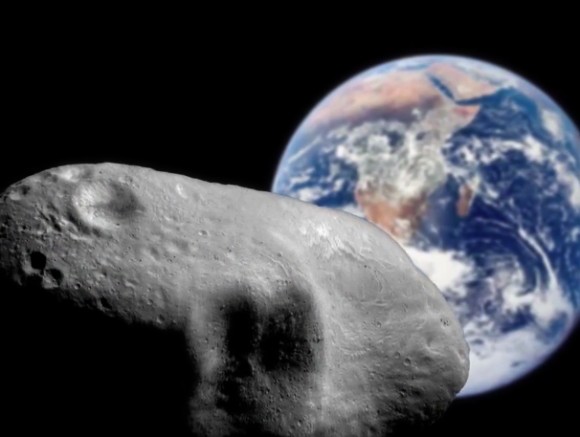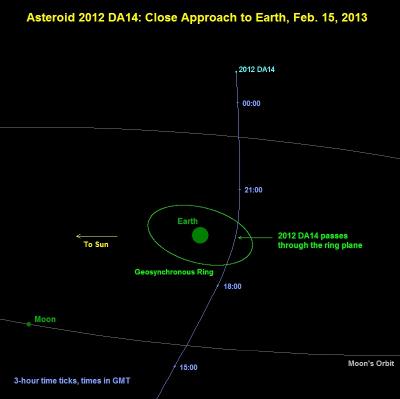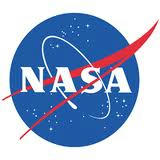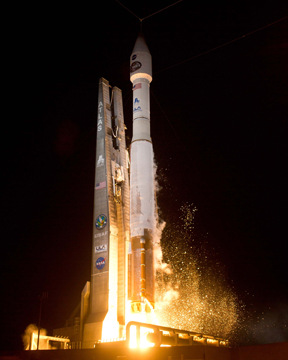Sierra Nevada Corporation and Lockheed Martin Space Systems Company Partner On Dream Chaser Programs
SPARKS, Nev., – January 30, 2013 – Sierra Nevada Corporation's (SNC) Space Systems is pleased to announce Lockheed Martin Space Systems Company of Littleton, Colo., is joining the SNC Dream Chaser® team. Lockheed Martin will be an exclusive partner to SNC on NASA's Certification Products Contract (CPC) and has been competitively selected to build the composite structure for the Dream Chaser at NASA's Michoud Assembly Facility in New Orleans, La. SNC was awarded $10 million for CPC Phase 1 to work with NASA towards government certification of the SNC Dream Chaser orbital crew transportation system.
"The SNC team is thrilled that Lockheed Martin will be joining our expanding world-class team of partner organizations also working to certify the Dream Chaser Space System for crewed flights to the International Space Station for NASA." said Mark Sirangelo, corporate vice president and head of SNC's Space Systems. "The CPC contract offers the Dream Chaser team the opportunity for a more robust technical interchange with NASA as we work to develop a safe, reliable orbital crew transportation system. This contract capitalizes on SNC's success working with NASA's Commercial Crew Program, as well as Lockheed Martin's expertise in developing and certifying Orion's beyond low Earth orbit human spaceflight hardware as part of NASA's Exploration Program. Our team will work towards the common goal of certifying the Dream Chaser to provide the next generation human transportation system."
Lockheed Martin is developing NASA's Orion Multi-Purpose Crew Vehicle (MPCV) and brings extensive and current experience in obtaining NASA certification for a crewed flight vehicle to the Dream Chaser program.
"We are pleased to join the SNC Dream Chaser team. Lockheed Martin brings with it tremendous human-rated space flight knowledge from our significant experience with large, human-flight structures, including 135 flights with the Space Shuttle's external fuel tanks. We feel we can share many synergies between the Orion exploration spacecraft and the Dream Chaser lifting body space vehicle. This provides a great opportunity to take NASA's investments in crew exploration capabilities and leverage them toward commercial transportation to low Earth orbit," said Jim Crocker, vice president and general manager, Civil Space, Lockheed Martin Space Systems Company.
The composite structure for the Dream Chaser flight test vehicle is being built under the SNC $212.5 million Space Act Agreement for the NASA Commercial Crew Integrated Capability Program. This effort leverages the extensive Lockheed Martin experience in building composite structures for spacecraft and high performance aircraft. With the addition of Lockheed Martin as a partner on the Dream Chaser program, SNC is now working with partner organizations in over 15 states on NASA's Commercial Crew Integrated Capability program.
"We are pleased to include Lockheed Martin as part of the Dream Chaser Team to develop early certification products and to build critical flight hardware. Their recent human spacecraft certification experience and composite expertise make them a great addition to our program," said Jim Voss, vice president of Space Exploration Systems and Dream Chaser program manager.
The SNC and Lockheed Martin partnership represents the best of entrepreneurial spirit and established space mission success, collaborating on vehicle development, certification and reaching additional customer markets for the Dream Chaser orbital vehicle. The team looks forward to working with NASA to successfully execute on the first round of the CPC contract and move towards offering the Dream Chaser Space System as a commercial solution to crew and cargo servicing of the International Space Station.
About Sierra Nevada Corporation's Space Systems
Sierra Nevada Corporation's Space Systems business area headquartered in Louisville, Colorado, designs and manufactures advanced spacecraft, space vehicles, rocket motors and spacecraft subsystems and components for the US Government, commercial customers as well as for the international market. SNC Space Systems has more than 25 years of space heritage in space and has participated in over 400 successful space missions through the delivery of over 4,000 systems, subsystems and components. During its history, SNC Space Systems has concluded over 70 programs for NASA and hundreds for more than 50 other clients globally. For more information about SS visit www.sncspace.com.
Media Contact: media.ssg@sncorp.com or Krystal Scordo at 720-407-3192.
About Sierra Nevada Corporation
Sierra Nevada Corporation (SNC) is one of America's fastest growing private companies based on its significant expansion and reputation for rapid, innovative, and agile technology solutions in electronics, aerospace, avionics, space, propulsion, micro-satellite, aircraft, communications systems and solar energy. Under the leadership of CEO Fatih Ozmen and President Eren Ozmen, SNC employs over 2,500 people in 32 locations in 17 states. SNC's six unique business areas are dedicated to providing leading-edge solutions to SNC's dynamic customer base.
SNC is also the Top Woman-Owned Federal Contractor in the United States. Over the last 30 years under the Ozmen's leadership, SNC has remained focused on providing its customers the very best in diversified technologies to meet their needs and has a strong and proven track record of success. The company continues to focus its growth on the commercial sector through internal advancements and outside acquisitions, including the emerging markets of renewable energy, telemedicine, nanotechnology, cyber and net-centric operations. For more information on SNC visit www.sncorp.com.
Media Contact: Julie.Ardito@sncorp.com or Julie Ardito at 775-849-6968.
===============================================================
Sierra Nevada welcomes Lockheed Martin to Dream Chaser project
By WILLIAM HARWOOD
CBS News
Lockheed Martin Space Systems Co. is joining Sierra Nevada Corp.'s Dream Chaser commercial manned spacecraft program, bringing the aerospace giant's expertise in flight certification and composites manufacturing to the private-sector initiative, company officials announced Wednesday.
Sierra Nevada is competing with Space Technologies Corp. and Boeing to develop a new generation of commercial space taxis that NASA envisions hiring to ferry astronauts to and from the International Space Station.
| 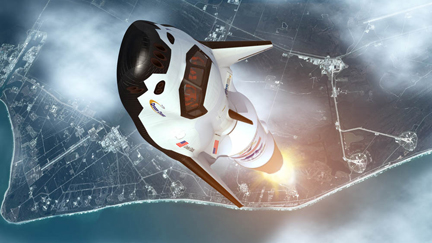
|
| Sierra Nevada's Dreamchaser spaceplane is the only winged spacecraft in a NASA competition to develop a commercial manned vehicle to service the space station. (Credit: Sierra Nevada) |
Unlike its rivals, which are designing wingless capsules that initially, at least, would make parachute descents to ocean splashdowns, Sierra Nevada's Dream Chaser is a winged lifting body that would launch atop an Atlas 5 rocket and re-enter the atmosphere much like a space shuttle, gliding to a runway landing.
The spacecraft can be launched manned, carrying up to seven astronauts, or unmanned, loaded with cargo, scientific experiments or both.
The contract announced today will bring Lockheed Martin's long experience in flight certification requirements to the Dream Chaser program and add manufacturing capability at Lockheed Martin's Michoud, La., plant where the company once built space shuttle external tanks.
"There's so much depth within the Lockheed Martin organization that we haven't been able to access," said Sierra Nevada Vice President Mark Sirangelo, leader of the Dream Chaser project. "We asked ourselves the question, how can we do that?
"And that has led to the beginning of a very exciting and very expansive relationship where Lockheed has joined our Dream Chaser team as an exclusive partner to help us with the certification, which is how do we get this vehicle really fit to fly safely?"
The certification work will cover "the things that are going to be necessary to fly human beings to orbit on a system that's supposed to be something that flies frequently," Sirangelo told reporters. "We're going to combine our knowledge ... We think this is a terrific thing, not only for us and our program, but for NASA."
The value of the contract was not revealed.
Lockheed Martin is the prime contractor for NASA's Orion spacecraft, a manned capsule originally intended for the Bush administration's Constellation moon program. NASA now plans to use Orion and a new heavy-lift booster for government-directed deep space voyages to a variety of targets.
The commercial manned spacecraft initiative is a bid by the Obama administration to kick-start development of private-sector vehicles that can take over more routine flights to and from low-Earth orbit.
Last August, NASA announced that Boeing, SpaceX and Sierra Nevada had been selected to continue spacecraft development work under the agency's Commercial Crew Integrated Capability Initiative, or CCiCap. Boeing's contract was valued at up to $460 million, SpaceX won a contract worth up to $440 million while Sierra Nevada was awarded $212.5 million.
Sirangelo said the Dream Chaser spacecraft will be fully reusable and relatively inexpensive to operate. Just as important, he said, it can be flown manned or unmanned to meet a wide variety of mission objectives.
"We view this as a transportation system to low earth orbit," he said. "For example, the vehicle in a long duration capacity unmanned could act as a science platform. There is the potential for the vehicle to do servicing in space, satellite servicing or other types of servicing."
"If there are other destinations, other than the space station, that are built, we could provide transportation. We also have the capability to bring people up to expand the envelope for what would currently be a very burgeoning, young, suborbital tourist market for those people who want to go to the next level."
Jim Voss, a former shuttle and space station astronaut who now serves as vice president of Sierra Nevada's Space Exploration Systems, said an engineering test version of the Dream Chaser will be flown to Edwards Air Force Base, Calif., in two weeks for the start of initial helicopter drop tests in about six weeks.
The unmanned test vehicle "will be released from a helicopter and it will fly down and land autonomously on a runway and we'll gather the aerodynamic data we need to complete our aerodynamic database for the Dream Chaser," Voss said.
© 2011 William Harwood/CBS News
===============================================================





